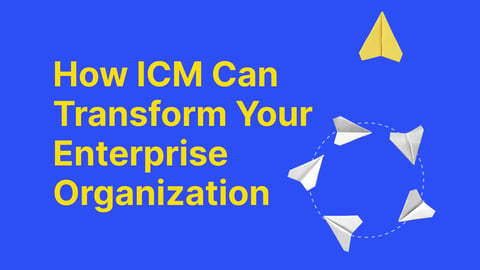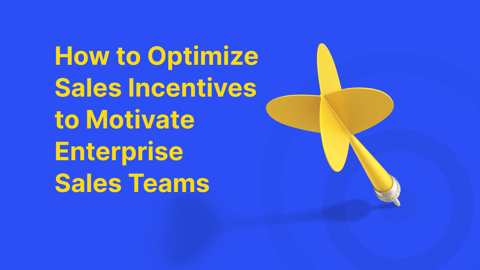Incentive pay is a powerful tool for any executive who wants to focus and motivate their employees and ensure that their business remains a competitive employer. But designing an incentive pay plan needs careful thought. Get it right, and it opens a world of possibilities for your business. Get it wrong, and you create a range of unhealthy dynamics that can affect employee focus, morale, and turnover.
So, let's look more closely at incentive pay and explore how best it can help business managers achieve their objectives.
- What’s Incentive Pay?
- What Incentives Are Available?
- The Different Types of Incentive Pay
- The Benefits of Incentive Pay
- The Challenges of Managing an Incentive Pay Program
What’s Incentive Pay?
Incentive pay plans are initiatives that motivate employees, encouraging them to invest more of their time and energy with their employer. Incentive pay plans are designed to give employees some control over their destiny and reward extra effort, dedication, and inspiration.
The Different Types of Incentive Pay
In broad terms, there are two types of incentive programs - structured incentives and casual incentives.
Structured incentives focus on the financial rewards available, based on specific and measurable outputs delivered by individuals, teams, business units, or a company. For example, these might cover company or team performance bonuses for achieving specific profit levels, revenue levels, or market share levels. It might mean a bonus based on their annual appraisal rating or a specific achievement such as a successful product launch. Salespeople typically have their own structured incentive program based around achieving sales quota and commission payments.
Casual incentives may cover incentive programs launched during the fiscal year to encourage extra effort in the short term to increase the productivity or outputs – typically of a team or an individual. They might involve a cash award or a team incentive, like an away day to encourage yet more impressive results. These incentives may be more discretionary but still need to be managed with the same care as structured incentive programs if they’re to be effective.
What Incentives Are Available?
There’s a range of incentive pay models available, and how you structure your incentive program will depend on your objectives and the needs of your business.
Let's look at some options in more detail.
1. Financial Incentives
Financial incentives often spring to mind most when people review their incentive programs. Money is highly effective at motivating behavior and rewarding performance. An incentive pay plan that features well-designed and structured incentives will be amazingly effective at creating the performance and results you’re looking for.
Sales teams have their commission plans based around the products they sell and how their customers buy their products. Non-sales staff often have access to monthly, quarterly, or annual bonus plans that can relate to their own objectives for the year, as well as the results of the wider business.
There may also be additional short-term financial incentives that spur employees to address specific issues, whether it be to promote a specific product, clear a backlog of stock, or complete a number of business transactions, for example.
2. Stock Options
Financial incentives typically cover incentive pay programs put in place for the current fiscal year. Stock options focus on offering incentive pay plans that encourage employees to take a longer-term view of the opportunity offered by their employer. Stock options are a common element in structured incentive plans aimed at senior managers, whose primary focus should be on the development of the business in the next 3–5 years rather than the next six months.
Stock options are also often awarded to startup employees as an incentive pay program that rewards long-term commitment, as well as spurring hard work, dedication, and innovation.
Stock options typically feature a strike price, which will be set at a significantly higher level than the share price when the award is made. Options vest when the share price reaches that price level, potentially providing a significant windfall for those who can benefit from them. Options may also vest when a company is taken over or when it goes through its Initial Public Offering (IPO).
3. Non-cash Incentives
Not all incentives need to come in the form of a cash bonus. While cash can be an excellent way to reward employees, another way to boost morale is to offer incentives like health club memberships, charitable contributions, or sabbaticals, for example. These offers can provide a cost-effective way to boost workplace morale by making a meaningful contribution to the quality of life of your workforce. Companies can use this type of incentive to differentiate themselves in the eyes of current and potential employees and show that they recognize their employees as individuals with motivations that go beyond the purely financial.
4. Opportunities for Professional Development
Reflecting this need for non-financial rewards, professional development opportunities also offer the option of fine-tuning employee motivation initiatives. Training opportunities allow individual employees to acquire new skills, experience, and qualifications that can help them develop their careers further. This may be in the form of a professional qualification or post-graduate education like an MBA. Opportunities to work overseas are also valued, alongside opportunities to work in new departments to develop new skills and broaden an employee’s experience.
The Benefits of Incentive Pay
Incentive pay programs help senior managers overcome a significant problem - how do you best get “all compasses pointing north” in a company? Incentive pay programs help provide direction and motivation to staff to use their imagination and initiative to solve business problems as they encounter them. Micromanaging employees in this situation is impractical. Incentive pay programs offer a practical alternative that often allows employees to have a stake in their own progress and success.
Intelligently designed, incentive pay programs go to the heart of the employer-employee relationship, aligning their interests in a way that helps both sides. These programs offer the flexibility to solve many complex business issues in the short, medium, and long term.
The Challenges of Managing an Incentive Pay Program
The potential offered by a well-designed incentive pay plan is significant. But the pitfalls offered by one designed with less care can also be substantial.
The first issue is ensuring that the behavior you want to promote through your incentive plan is the right behavior for your business. There’s little point in encouraging your employees to do more if, in doing so, you harm your reputation and your relationships. Use revenue intelligence capabilities to understand who your customers are, how they buy from you, and how they make their decisions. Use these insights to enhance the quality of engagement with your customers across the board, not just in the sales team.
Another issue to think about is whether you have the right incentive plan for your business and if it’s optimized. We’ve seen there are many variables that can be part of your plan. The question is, will your plan deliver what the business needs or will a different plan structure get you better results? The trick here is to use incentive compensation management capabilities that will help you run “what if” scenarios to understand the impact on your business of a range of potential plans. Use this insight and your own judgment and experience to create the ideal plan for your business. This also has the valuable advantage of helping you accurately assess the cost of your various plans to ensure your ideal plan is cost-effective.
Another challenge is managing an incentive compensation plan. Business models are typically very lean, with few extra resources available to manage a sophisticated incentive planning model. The smart move is to use automation to help design your plans, monitor them, and use self-service capabilities that allow employees to check how they’re doing with their personal incentive plan. You can even use AI capabilities to identify areas that might make next year’s incentive plan even more effective.
Get more insights on how AI, digitization, and data are transforming the ways you do business (and think about sales compensation) by downloading our free eBook, The Fourth Industrial Revolution.




